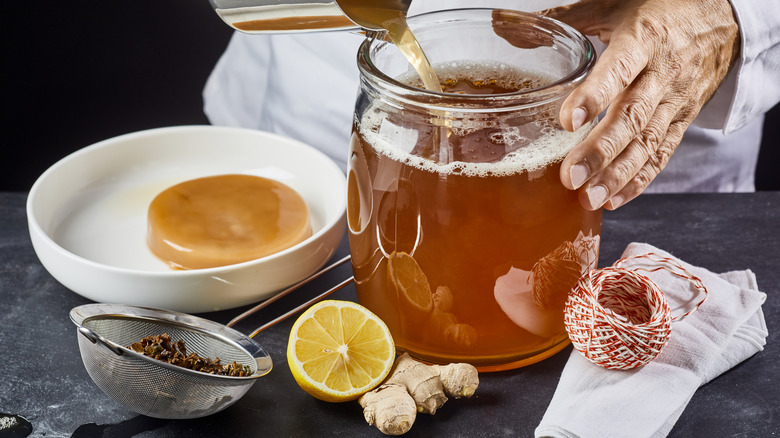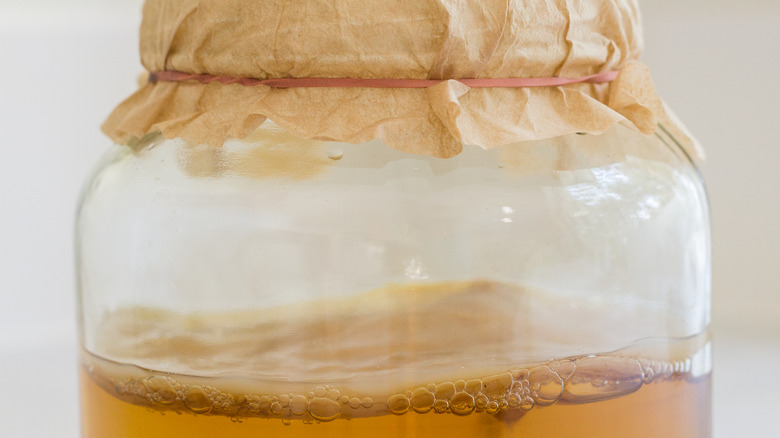Is It Normal For Kombucha To Form A Cloudy Top Layer?
Kombucha has become well-known as a bubbly beverage rich in probiotics, antioxidants, and vitamin B (via the Cleveland Clinic). According to Healthline, consumption of this fermented tea has also been associated with having positive effects on cholesterol, decreasing the risk of certain cancers, and perhaps even helping to lessen body fat, meaning kombucha can be good for weight loss, too.
While kombucha is fermented, many of the bottles of the fizzy probiotics found on the shelves of supermarkets or convenience stores are not likely to get you drunk, as commercially available varieties top off at only about 0.5% alcohol, per Bon Appétit. However, there are versions of kombucha crafted with alcohol as well, and according to MarkeWatch, the demand for hard kombucha is on the rise. So, if a healthy beverage with the benefit of a buzz is what you're after, you can look to the ever-increasing number of brands making kombucha with a kick.
It can be healthy to drink kombucha everyday but it may be costly to purchase bottled brands on the regular. Instead, making it at home can be cost-efficient and easy once you have a favorite kombucha recipe and know what to look for when brewing. Should you start brewing at home, you might initially be concerned when a cloudy layer forms atop your kombucha batch. What is it, and is it normal?
Brewing kombucha
Making kombucha is a fairly simple process using just a few ingredients: water, black or green tea, a SCOBY (symbiotic culture of bacteria and yeast), and sugar (via Raw Kombucha). Once you follow a simple recipe, and store the mixture in covered glass containers, the fermentation process begins. However, once that process starts, the chemical reactions taking place — like the formation of cloudiness in the jar — may cause alarm for novice brewers.
Cultures for Health, however, assures that the cloudy layer that forms is normal; it's actually a solid sign that the SCOBY is doing its work to transform your tea into kombucha. The formation itself is actually a new culture and an indicator that the fermentation process is working successfully. Some call the new addition to the jar "the baby," but if you want to impress your friends with your newly found fermentation vocabulary, you can also use the term "pellicle" (via Fermentaholics).
Once you've mastered making basic kombucha, there's no limit to the variations you can create. You can add flavor to your kombucha by including herbs and spices or learn how to make coffee kombucha. You can keep it on hand as a healthy daily drink, but it can also be used to concoct some killer kombucha cocktails.

